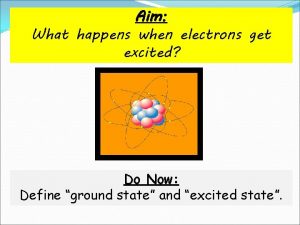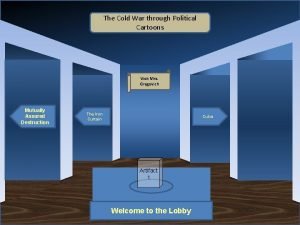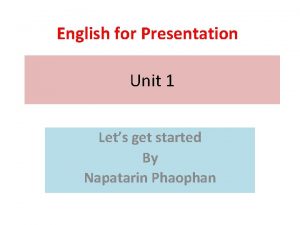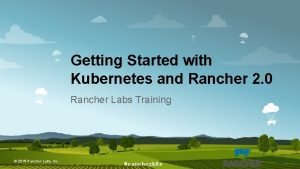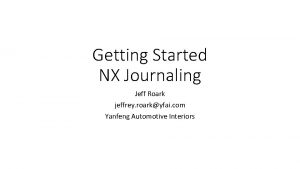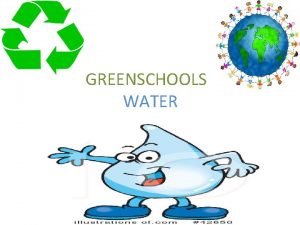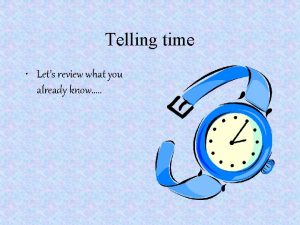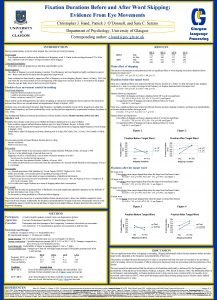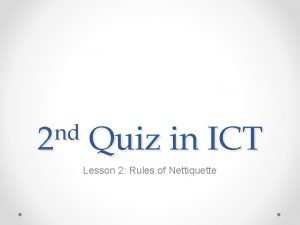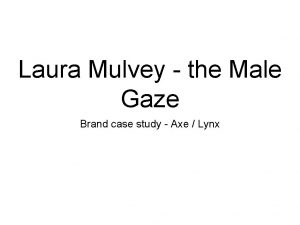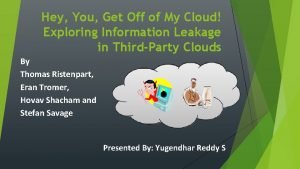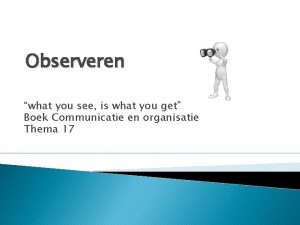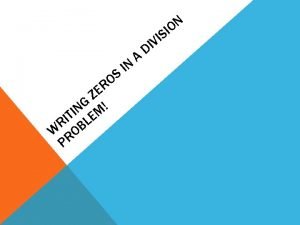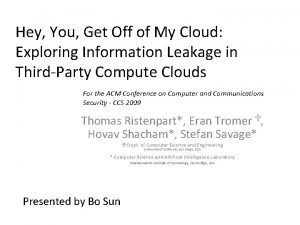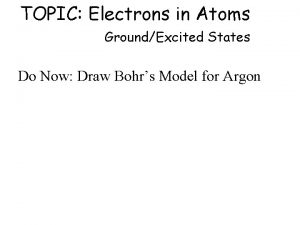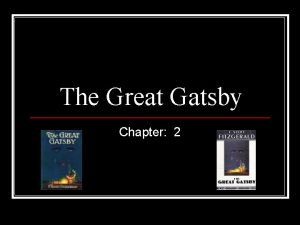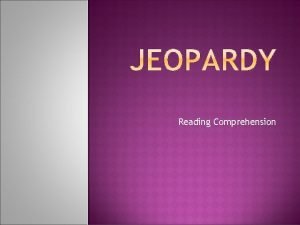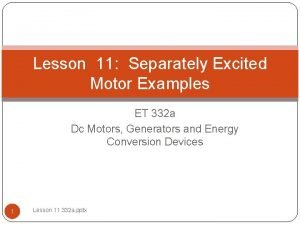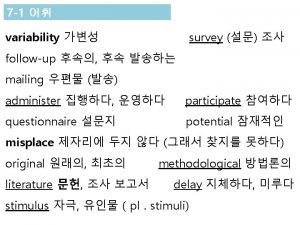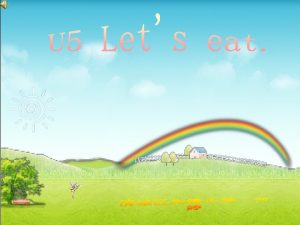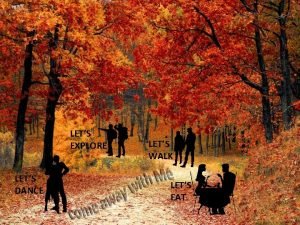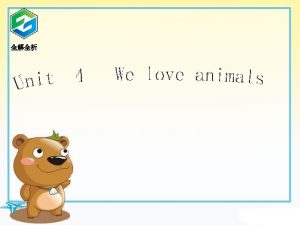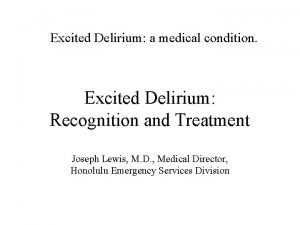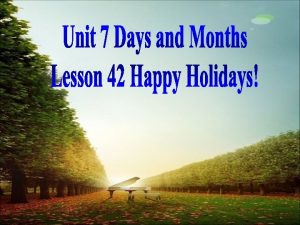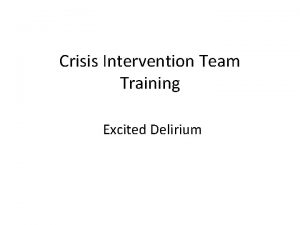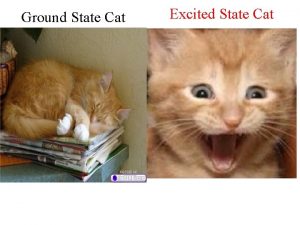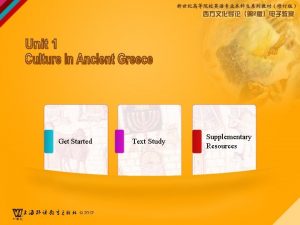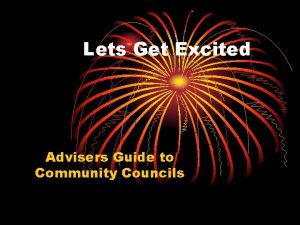Lets Get Started To get you excited send







































- Slides: 39

Let’s Get Started • To get you excited • send it in email • My advice edit that document (convert it to a Google doc…or have it up everyday we are not testing and take notes corresponding to it)

Geography • What is it? ? • Not as easy as you think

Geography Definition: Contemporary Definition: • Description of the Earth’s surface and the people and processes that shape its landscapes. • Complex challenge • Ever-changing • Social science • Way of thinking • Not just memorizing facts/places • Touches every aspect of human existence • Scientific study of the location of people and activities across Earth and the reasons for their distributions

2 Branches 1). Human Where and why humans are located as they are 2). Physical Where and why natural forces occur as they do • Key Issues: • • • Thinking about space Thinking about place Thinking about region Thinking about scale Thinking about connections Later-5 Themes of Geo

History of the Field Geography • • Coined by the Greeks Erastosthenes Geo=earth Graphy=to write 2 simple questions 1). Where 2). Why Greeks • • Wrote about the Earth Homer’s Illiad and Odyssey Sailed around the Mediterranean Sea Established the 3 early continents: Europe, Asia, Africa (Libya) Aristotle, Socrates, Plato furthered the belief that the Earth was round Erastosthenes determined the circumference of the Earth with 99. 5% accuracy Anaximander made the first scale map of the world Accurate on large-scale of Mediterranean Sea, but not the rest of the world

Chimamanda Adichie: The danger of a single story • Send email of link • Watch, want you to be able to discuss tomorrow

Chapter 1: Thinking Geographically HW: Read Chapt. 1 Key Issues 1. 2. 3. 4. 5. Thinking about space Thinking about place Thinking about region Thinking about scale Thinking about connections

Key Issue 1 - Thinking About Space • Read the Intro • Geographers observe regularities across earth and depict them on maps • Thinking about Space – Spatial thinking is the most fundamental asset of a geographer ( Space to a Geographer is like time to a historian) – The process of understanding why people and activities are distributed across the space

What would you do – Geographers ask where and why not why and when – The key difference between historians and geographers is first hand experience

Key terms used to start • Distribution – Look around the room; Is the room set up regularly or in chaotic fashion? Why do you think it was set up this way? – Communities, cultures and cities are set up the same way, why? – The arrangement of a feature in space is known as distribution • There are three main properties of distribution; density, concentration and pattern

Terms • Density – The frequency in which something occurs in space is called density; look at the desk, how dense are they? – Arithmetic density is the density in which the total number of objects in one area; this is used in population • Ex. 59 million people divided into the square miles 94, 251 = 626 persons per square mile

Applied to our field – Large population does not mean large density, Why not? China has 1. 2 billion people but is not the highest density, why? – Density is also unrelated to poverty, Switzerland vs. Mali – Physiological Density- number of people in an area suitable for farmland, could mean difficulty in growing food – Agricultural Density- number of farmers in an area, could mean inefficient agriculture – High Housing Could mean what?

Terms • Concentration – The extent of a features spread over space is concentration – Describes changes in distribution • NY concentration decreases as what happens – Concentration and distribution are different • Think of the same amount of houses in a neighborhood with different yard sizes – Baseball teams and expansion teams • How do they change over time compared to concentration and density?

Terms • Pattern – Geometric arrangements of objects in space – Grids laid down by the Land ordnance of 1785 • How about Greenville • 30 Baseball teams are located in the Metropolitan areas of the north – Page 6 of your book

Maps, yes, we need to talk • Maps – Two dimensional or flat scale model of the earths surface • Most important tool of a Geographer – Cartography the art of map making- one of the oldest professions- 2300 BC- Babylonians – There are two functions • 1 - reference material • 2 - Geographic information • Start on pg 6 and carry over to 8, Write down the people and the differences they brought to map making skills

Moving on up • Contemporary mapping – Remote Sensing- the acquisition of data from long distance • Satellites can analyze small areas called pixels or picture element – Geographic Information System (GIS) • Analyze many components of a map at once layered on each other, Population and geography etc. . – GPS • We know this one- Time travel can be proved through this phenomena

What is wrong with maps • Projection – The process of transferring data from a spherical reference to a flat reference – Four types of distortion can accrue 1. 2. 3. 4. Shape Distance Size Direction – Equal area projections are mostly used • Size of populated areas are more important

Key Issue 2 - Thinking about Place • Feeling for the feature that contribute to the distinctiveness of a particular place • Location – The position something occupies on earths surface • Names – Toponym- is the name given to a place on earth • • Names of places related to figures or objects, Charleston Religious Sayings, Eureka Physical environment – Offensive racial names and slurs are going to be changed – Changes due to political upheaval; Eastern Europe or the Middle East

Where we see it • Names and Places – British- N America and Australia – Portuguese- Brazil – Spanish- Latin America – Dutch- S. Africa

Further • Town names – Ex). Coal factories in W. Virginia • Street names

Terms Again • Site – The physical character of a place – Rivers, Hilltops, Islands have been good places to start cities, why? Can they make more? NY • Situation – The location of a place relative to another place • Helps us find an unfamiliar place by locating a familiar one • The situation also allows us to see the importance of a location compared to accessibility to another place

Latitude and Longitude • The earth is divided into lots of lines called latitude and longitude.

Lines • Longitude lines run north and south. • Latitude lines run east and west. • The lines measure distances in degrees. Latitude Longitude

However • Longitude measures= • Latitude measures=

Where is 0 degree? • The equator is 0 degree latitude. • It is an imaginary belt that runs halfway point between the North Pole and the South Pole. Equator

M Where is 0 P degree? E R • R I 0 I degrees The prime meridian is D M longitude. This imaginary line runs I through the United Kingdom, France, E A N Antarctica. Spain, western Africa, and


Hemispheres • By using the equator and prime meridian, we can divide the world into four hemispheres, north, south, east, and west.

Important • MCD • LDC • Later, Projections. . Polar projection, Development


Physical Geography • Mathematical Situation – Location can be found precisely through the meridians and parallels • Meridian- an arc between north and south poles – Each Meridian is located through the use of longitude – Greenwich, England- Prime Meridian 0 Longitude » All others have numbers between 0 and 180 degrees • Parallel- circle around the globe; right angles to the meridian – Each parallel can be found through latitude – Equator is 0, North and South poles are 90 • Each degree is divided into 60 min and then into 60 sec – Precise location of all features on a map

Key Lines • Time from Longitude – Time Zones- 24 zones divided into 15 degrees of Longitude, map on pg 15 • Greenwich Mean Time- or Universal Time is the master reference why? – International Date Line- past 180 degrees either way adjust the time by 24 hours • Determining Longitude – Longitude is man made creation; Longitude act of 1784 established it permanently

Time Zones • The Earth is divided into 24 time zones, corresponding to 24 hours in a day. • As the earth rotates, the sun shines in different areas, moving from east to west during the course of a day. • Places that have the same longitude will be in the same time zone.

Key Issue 3 - Thinking about Region • Region – An area of earth described by one or more specific characteristic, North East vs. South East – A region gains its uniqueness through human and environmental differences, BBQ vs. Bagels • Formal Region – Also called a formal region- described by homogeneous characteristics; language, economy, crop, government • Problem lies in the minorities of that region • Functional Region – Also known as a nodal region- organized around a node or focal point • Shops, services, newspapers, radio, TV

• Vernacular region – Perceptual region- cultural identity , map pg 18, north vs. south, east vs. west • Seen for the south as a place of pride and for others a place to avoid • Regional Integration/ Culture – Culture- customs, traits, beliefs, material belongings, traditions of a particular group • 2 traits of culture – What people care about • Language, Religion, Ethnicity define this – What people take care of • Wealth, food, clothing, shelter – MDC- More developed Economically, USA, Japan, made goods – LDC- Less developed Economically, Africa, Middle East, Agriculture

• Cultural Ecology- Human environment relationship – Environmental determinism- people actions are caused by their environment • Alexander Humbelt, Carl Ritter, Fredrick Ratzel, Ellen Churchhill Semple, Ellsworth Huntington – Possibilism- peoples actions are limited to their environment, Domestication of animals • Regionalism • Resources, food production, buildings etc. . – Wealth and technology influence both of these, how?

Need to know • Climate is often classified by German Vladimir Koppen– Five specific main climates • • • Tropical Climates dry Climates Warm mid-latitude climates Cold mid-latitude climates Polar climates

Key issue- 4 Thinking about Scale • Scale- the scope of a particular idea or function, “ Think globally act locally” • Map Scale – Relation of something's size and its actual size on the earth – Most are scaled down, obviously • Spatial Association – Scaling from a very small portion to a very large portion depending on your need, pg 24 • Globalization – The force or process that involves the entire world • Globalization of Economy – Transitional Corporations- Lead the charge of globalization, GE, BP • All economies are global and effect each other in the manner

Key Issue 5 - Thinking about Connections • Space Time connection- the time it takes for something to reach another place, News • Spatial Interaction – In the past people had to move or travel to spread information, what do we rely on now? • Networks – Chains of communication that connect places • ABC, CBS, Airline Hubs • Distance decay- The further one place is from another the less interaction they have to its eventual disappearance
 Excited to get started
Excited to get started Lets get started images
Lets get started images Get on / get off transport
Get on / get off transport I'm excited to get to know you
I'm excited to get to know you One direction songs with alliteration
One direction songs with alliteration Excited state electron configuration
Excited state electron configuration The hartford times
The hartford times Let's start with introduction
Let's start with introduction Soar
Soar Rancher slack
Rancher slack Fepblue gym membership
Fepblue gym membership Lets know each other
Lets know each other Jeff roark
Jeff roark Teacher good morning everybody
Teacher good morning everybody You excited
You excited Let's see what you already know
Let's see what you already know The water lets you in
The water lets you in Lets see what you already know
Lets see what you already know Let's see what you already know
Let's see what you already know Lets see what you know
Lets see what you know The word-skipping technique lets you figure out
The word-skipping technique lets you figure out A program designed to send advertisements mostly pop-ups
A program designed to send advertisements mostly pop-ups Laura mulvey male gaze
Laura mulvey male gaze Hey hey you you get off of my cloud
Hey hey you you get off of my cloud If statement grammar
If statement grammar Observatieplan stappen
Observatieplan stappen What do you get when you cross darth vader with an elephant
What do you get when you cross darth vader with an elephant Hey hey you you get off of my cloud
Hey hey you you get off of my cloud Get up get moving quiz
Get up get moving quiz Get up get moving quiz
Get up get moving quiz Get up get moving quiz
Get up get moving quiz Selection pseudocode example
Selection pseudocode example Get focused get results
Get focused get results Germer
Germer Excited state electron configuration
Excited state electron configuration The great gatsby chapter 2 setting
The great gatsby chapter 2 setting Is venus terrestrial or gaseous
Is venus terrestrial or gaseous Tictle
Tictle Tomorrow is jill's birthday she is excited
Tomorrow is jill's birthday she is excited Separately excited motor
Separately excited motor





